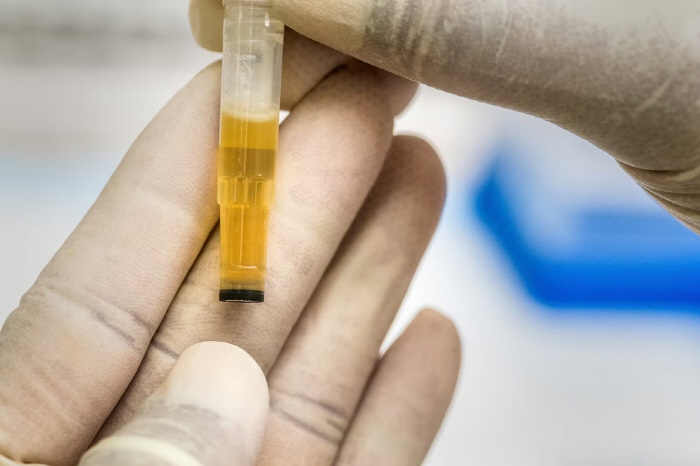Detecting microhematuria more than twice in middle-aged people. We should suspect this
Jul 29, 2025
|
Microhematuria is sufficiently distinguished in the regular health examination urine test we generally perform. Health examinations include a urinary chemical test in which a positive (+) reaction occurs in the presence of red blood cells, and a microscopic test in which urine is observed after centrifugation. Usually, if urine is observed under a microscope or more than three red blood cells are found per high-magnification field of view (hpf) through a urine test, it is defined as microhematuria.
However, if there is one microhematuria finding, it is important to repeatedly check it. This is because it may be temporary findings due to exercise, dehydration, and menstruation, and if microhematuria is repeatedly detected more than once, detailed examinations such as kidney function tests, imaging tests, and cystoscopy may be required.
Microhematuria is divided into glomerular hematuria and non-glomerular hematuria. The glomerulus is a structure that acts as a filter for filtering blood, and when damaged, red blood cells escape to the urine. Non-glomerular hematuria often occurs in urinary tract diseases such as bladder and urethra, and appears in cystitis, pyelonephritis, urinary stones, bladder cancer, and prostate disease.
Glomerular hematuria is caused by IgA nephropathy, acute glomerulonephritis, and lupus nephritis. If proteinuria is accompanied, kidney disease may already be in progress and in this case, a kidney biopsy may be required.
Microhematuria has different causes depending on the age group. Microhematuria often appears temporarily after exercise in children and young adults, and urinary tract infections are common in women. Urinary stones are gradually increasing in frequency, and glomerularity or non-glomerularity is discriminated by the presence or absence of proteinuria. In general, benign hematuria is high and the prognosis is good.
Urinary stones are a very common cause in middle-aged people, and glomerulonephritis and kidney disease are also possible. Urinary stones can be suspected if flank pain is present. If you are a smoker in your 60s or older, you should be careful of urinary tract tumors such as bladder cancer. Men have many prostate diseases such as prostatic hypertrophy and prostatitis, and kidney function should also be identified.
"If repeated microhematuria is observed in people in their 60s or older, the most important thing is to discriminate neoplastic lesions using cystoscopy and imaging tests," said Kim Kyung-jong, head of the urology department at Ceran Hospital. "If the cause of hematuria is in the urinary system, there is a high possibility of visual hematuria and can be accompanied by pain, urination pain, and frequent urination."
Manager Kim Kyung-jong said "Even if there is repeated microhematuria, there are many cases where there are no symptoms, so it is easy to leave it unattended. However, if the symptoms of hematuria persist and are accompanied by proteinuria, you must seek special treatment"If the urology assesses the cause early, it can prevent progression to severe kidney disease and receive customized treatment depending on the causative disease."
|
This article was translated by Naver AI translator.















